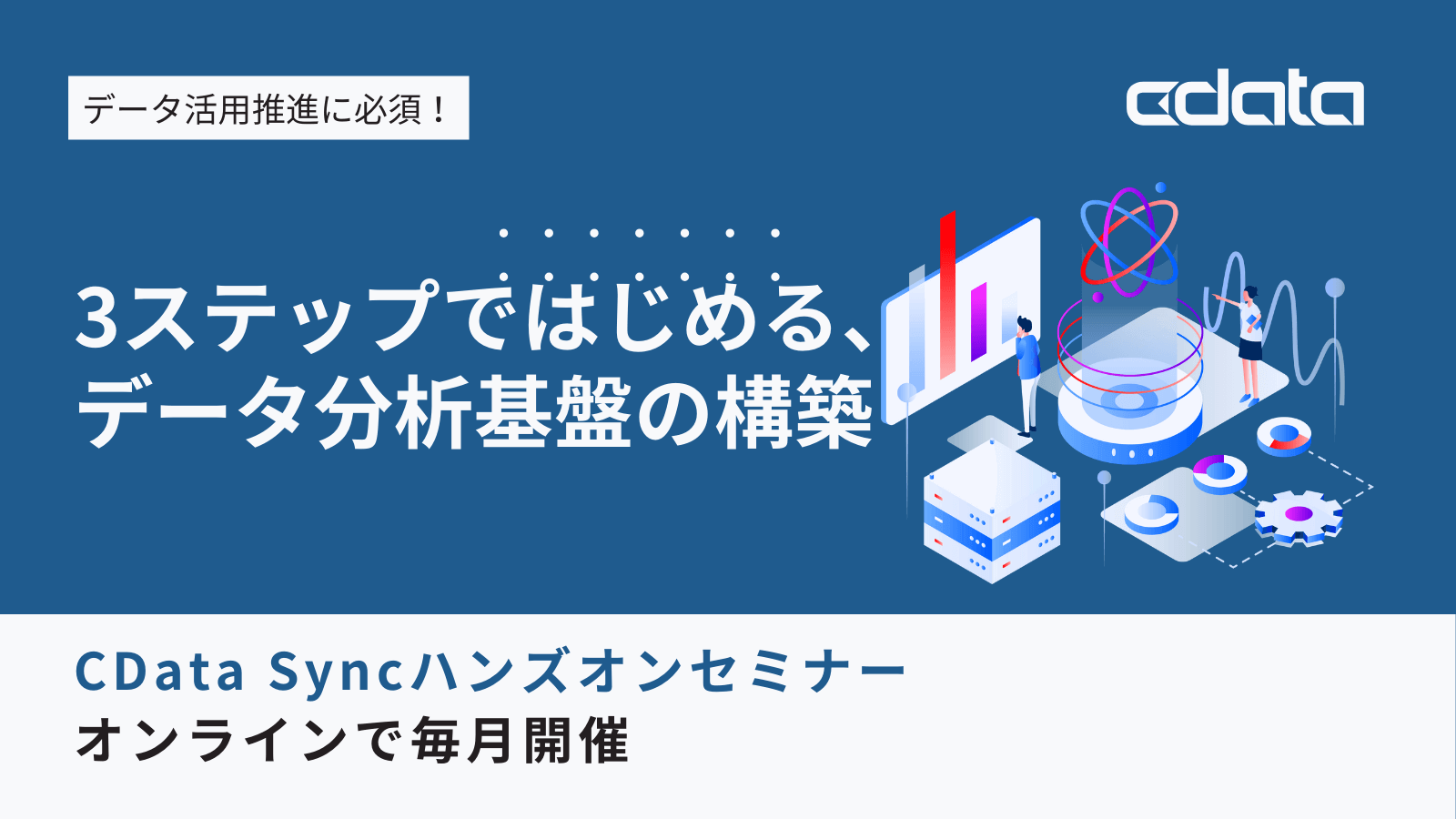ノーコードでクラウド上のデータとの連携を実現。
詳細はこちら →CData Software Japan - ナレッジベース
Latest Articles
- MySQL のデータをノーコードでREST API として公開する方法:CData API Server
- CData Sync AMI をAmazon Web Services(AWS)で起動
- Connect Cloud Guide: Derived Views, Saved Queries, and Custom Reports
- Connect Cloud Guide: SSO (Single Sign-On) and User-Defined Credentials
- Connect Cloud クイックスタート
- Shopify APIのバージョンアップに伴う弊社製品の対応について
Latest KB Entries
- DBAmp: Serial Number Expiration Date Shows 1999 or Expired
- CData Drivers のライセンスについて
- Spring4Shell に関する概要
- Update Required: HubSpot Connectivity
- CData Sync で差分更新を設定
- Apache Log4j2 Overview
ODBC Drivers
- [ article ] Exploratory でTableau CRM Analytics データを連携する方法
- [ article ] Microsoft Access リンクテーブルからBusiness b-ridge ...
- [ article ] SAP ByDesign データにSQL Server のリンクサーバーとして接続する方法
- [ article ] Exploratory でSlack データを連携する方法
JDBC Drivers
- [ article ] SharePoint Excel Services データを帳票ツールbiz-Stream ...
- [ article ] Jetty コネクションプールからBullhorn CRM データに連携。
- [ article ] DB2 データをDatabricks にロードして分析処理を行う方法:CData JDBC ...
- [ article ] Squirrel SQL Client からGoogle Contacts データに連携
SSIS Components
- [ article ] SSIS を使ってDropbox データをSQL Server にインポート
- [ article ] MailChimp をSSIS 経由でSQL サーバーにバックアップする
- [ article ] Salesforce をSSIS 経由でSQL サーバーにバックアップする
- [ article ] Exact Online をSSIS 経由でSQL サーバーにバックアップする
ADO.NET Providers
- [ article ] Redis データをDevExpress Data Grid にデータバインドする。
- [ article ] 生産スケジューラFLEXSCHE へSurveyMonkey からデータを取り込む
- [ article ] Visual Studio でチャートコントロールと SAP Netweaver Gateway ...
- [ article ] SharePoint データを使ったCrystal Reports を発行
Excel Add-Ins
- [ article ] Microsoft Power Query からTrello データに連携してExcel から利用
- [ article ] データ変換ツールTranSpeed でExcel Online のデータにアクセスする方法
- [ article ] Linux 上でExcel データに接続するGo アプリケーションを作成する方法
- [ article ] Mac OS X 上のMS Excel でCloudant データを連携利用
API Server
- [ article ] Power BI データフローでOData データを分析用にデータプレパレーション
- [ article ] Linux 上でOData データに接続するGo アプリケーションを作成する方法
- [ article ] SAP Lumira でExcel のOData Feeds を取り込み
- [ article ] PowerBuilder からOData データに接続してみた
Data Sync
- [ article ] Google BigQuery へのReckon データのETL/ELT ...
- [ article ] Oracle データベースへのAzure Active Directory データのETL/ELT ...
- [ article ] Azure Data Catalog データを複数のデータベースにレプリケーション。
- [ article ] Oracle データベースへのe-Sales Manager データのETL/ELT ...
Windows PowerShell
- [ article ] PowerShell を使ってXero データをSQL Server にレプリケーション
- [ article ] PowerShell からActive Directory ...
- [ article ] Cassandra データをPowerShell script でSQL Server ...
- [ article ] PowerShell からActive Directory ...
FireDAC Components
- [ article ] Delphi のMicrosoft Dataverse データへのデータバインドコントロール
- [ article ] Delphi のZuora データへのデータバインドコントロール
- [ article ] Delphi のQuickBooks Online データへのデータバインドコントロール
- [ article ] Delphi のSplunk データへのデータバインドコントロール





